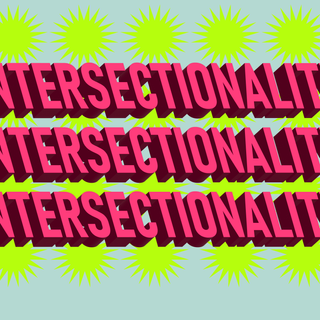
Is This Normal? “I Lose My Train of Thought When I Look People in the Eye”
Making eye contact can hijack people’s brains in a way that makes it difficult for them think and process — making it difficult to talk.

In this series, we dig into our strange phobias, fixations, and neuroses, and ask ourselves — Is This Normal?
I struggle to keep up with conversations if I’m also expected to make eye contact with the people I’m speaking with. It feels like I’m being asked to multi-task in a way I can’t handle, and bolsters my social anxiety. Picture this: I’m hanging out with a friend and discussing the Mahabharata, which I can talk endlessly about; suddenly, I accidentally look her in the eye, and lose my entire train of thought while my eyes start watering and my heart starts racing; even when I am able to regain a sense of what I was saying, I simply cannot manage to translate it into coherent sentences.
As a result, socializing in person has felt like a task for as long as I can remember. Phone calls are nicer. So are video calls; people can’t really tell if you’re looking them in the eye, or simply staring at a copy of Van Gogh’s The Starry Night that’s hanging on the wall behind them. I have come up with similar strategies with in-person conversations, too — instead of looking into a person’s eyes, I try to focus on the tip of their nose, the area between their eyebrows, or simply their lips. The latter helps me cope with my auditory processing disorder, too, but at the cost of coming off as creepy, on occasion. As for fixating on other parts of people’s faces, I run the risk of making them conscious, and prompting questions like, “Is there something wrong with my face?”
For a long time, I wondered whether my struggles with making eye contact were normal. Then, I learnt that I was autistic, and lack of eye contact was a rather common symptom of autism. In fact, forcing an autistic individual to make eye contact can induce dizziness, nausea, increased heart rate, tremors, watering of the eyes, and overheating of the body. I have experienced most of these throughout my life.
However, anxiety about making eye contact exists among allistic individuals, too. The number of people relating to my woes prompted this realization — showing me how the cultural emphasis on maintaining eye contact while talking to someone has always been overrated and limiting. Take the fact that we’re repeatedly told just how important it is to maintain eye contact during a job interview — an affair that’s already stressful enough — in a bid to make a better impression on the interviewers. Except, by making one fumble as a result of being fixated on eye contact, the result could easily be counterproductive,
According to a 2016 study, even though eye contact seems unrelated to verbal processing, the former can hijack people’s brains in a way that makes it difficult for them to concentrate on the simplest of things, including making conversation, because it disrupts their thinking and reasoning abilities. Averting one’s gaze, instead, can enable one to disengage from their immediate environment, and boost their cognitive processing, a 1998 study found.
Related on The Swaddle:
Is This Normal? “I Talk To Inanimate Objects”
But for some people, the angst is more intense and debilitating. Living with a social anxiety disorder, for instance, can lead to a “pronounced fear” of looking people directly in the eye. This is a result of them being prone to perceiving direct eye contact as a sign of danger. Research also suggests that socially anxious individuals exhibit “vigilant and avoidant patterns of attention with respect to the processing of emotional social stimuli,” causing them to “avoid maintaining eye contact,” and simultaneously, “hyper-scanning… their environment.”
Shame, shyness, and guilt, too, can make eye contact a more laborious endeavor than it otherwise would’ve been.
However, even among those for whom eye contact is painful — and not just mere drudgery — the degree of struggle can vary, depending on the topic of the conversation and the person they’re talking to. If the topic is depressing or induces a sense of embarrassment in either the speaker or the listener, the respective individual might struggle to maintain eye contact.
As for variations brought about by one’s conversation partner, the determinant is: how fond are we of them? When we really admire the person we’re talking to, maintaining eye contact can become relatively easier. This is precisely why intense eye contact can be a tool for flirting. An article on Forbes notes, “[W]e judge relationships by the amount of eye contact exchanged: the greater the eye contact, the closer the relationship.” However, that may be an allistic perspective. For autistic individuals like me, being closer to someone means we are more comfortable unmasking — or, revealing our autistic traits — around them. This means that we are likely to feel less pressured to force ourselves into making eye contact with people closer to us.
Nonetheless, as it turns out, making eye contact is a struggle familiar to many — even though the frequency and intensity of it might vary from person to person. So, if someone looks away from us during a conversation, they aren’t necessarily being rude; it’s likely that they’re overwhelmed and simply trying to gather their thoughts.
As for dealing with the anxiety of making eye contact, as an article in The Cut advised, “When in doubt, then, let this be the deciding vote in favor of looking away — you may seem a little shadier, but at least you’re not tripping over your words.”
Devrupa Rakshit is an Associate Editor at The Swaddle. She is a lawyer by education, a poet by accident, a painter by shaukh, and autistic by birth. You can find her on Instagram @devruparakshit.
Related


Words Mean Things: ‘Intersectionality’
